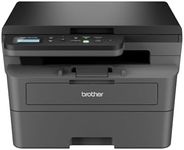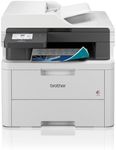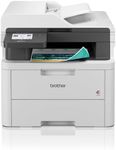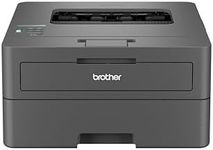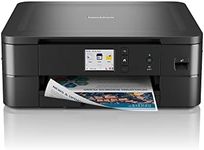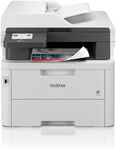Buying Guide for the Best Brother Printers
When choosing a Brother printer, it's important to consider what you'll primarily be using it for, as this will guide you in selecting the right model. Whether you need a printer for home use, a small office, or a larger business environment, Brother offers a range of printers with various features to meet different needs. Understanding the key specifications will help you make an informed decision that aligns with your printing requirements.Print TechnologyPrint technology refers to the method a printer uses to produce text and images on paper. Brother printers typically use either inkjet or laser technology. Inkjet printers are versatile and can handle a variety of media types, making them ideal for home use or small offices that need to print photos or color documents. Laser printers, on the other hand, are known for their speed and efficiency, especially for high-volume black-and-white printing, making them suitable for larger offices. Consider what types of documents you will be printing most often to decide which technology suits your needs best.
Print SpeedPrint speed is measured in pages per minute (PPM) and indicates how quickly a printer can produce printed pages. This is an important factor if you need to print large volumes of documents quickly. For home use or small offices, a print speed of 20-30 PPM is usually sufficient. For larger offices or businesses with high printing demands, look for printers with speeds of 30 PPM or higher. Assess your typical printing volume and urgency to determine the appropriate print speed for your needs.
Print QualityPrint quality is determined by the printer's resolution, measured in dots per inch (DPI). Higher DPI values generally mean better print quality, which is crucial for printing detailed images or professional documents. For general document printing, a resolution of 600 x 600 DPI is adequate. If you need to print high-quality photos or graphics, consider a printer with a resolution of 1200 x 1200 DPI or higher. Think about the level of detail you require in your prints to choose the right print quality.
Connectivity OptionsConnectivity options refer to the ways you can connect your printer to your devices. Common options include USB, Wi-Fi, Ethernet, and Bluetooth. Wi-Fi connectivity is convenient for wireless printing from multiple devices, making it ideal for home or office environments with several users. Ethernet is suitable for wired network connections in larger offices. USB is a straightforward option for direct connections to a single computer. Consider how you plan to connect your printer and the number of users to determine the best connectivity options for you.
Paper HandlingPaper handling refers to the types and sizes of paper a printer can accommodate, as well as its paper capacity. This is important if you need to print on different media types or require a printer that can handle large print jobs without frequent paper refills. For home use, a standard paper tray capacity of 100-150 sheets is usually sufficient. For office use, look for printers with larger capacities or additional trays to handle higher volumes. Consider the types of documents you print and the frequency of your printing tasks to choose the right paper handling capabilities.
Additional FeaturesAdditional features can enhance the functionality of your printer. These may include duplex printing (automatic double-sided printing), scanning, copying, faxing, and mobile printing capabilities. Duplex printing is useful for saving paper and reducing costs. Scanning and copying are beneficial for home offices or small businesses that need multifunction capabilities. Mobile printing allows you to print directly from smartphones or tablets, adding convenience. Evaluate which additional features are essential for your tasks to select a printer that offers the right combination of functionalities.

